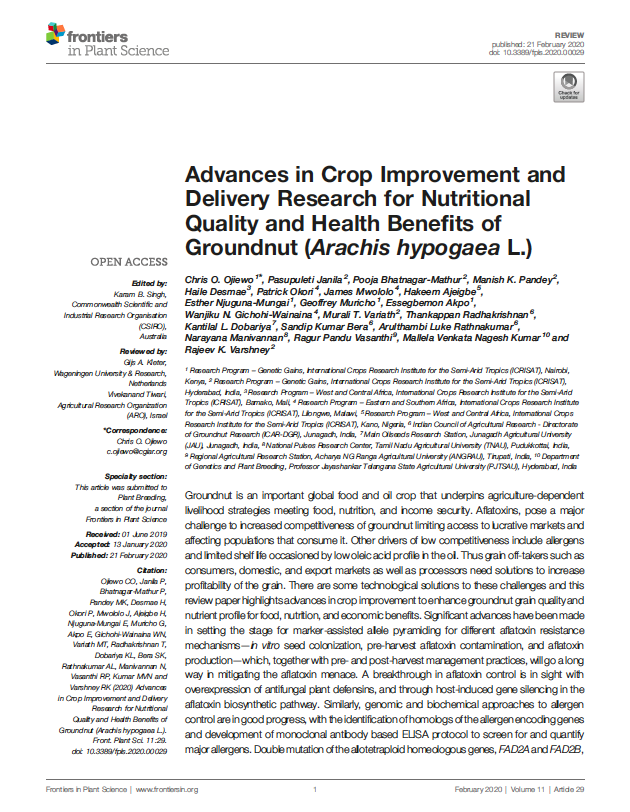Advances in Crop Improvement and Delivery Research for Nutritional Quality and Health Benefits of Groundnut (Arachis hypogaea L.)
Summary
Groundnut is an important global food and oil crop that underpins agriculture-dependent livelihood strategies meeting food, nutrition and income security. Aflatoxins pose a major challenge to the increased competitiveness of groundnut, limiting access to lucrative markets and affecting populations that consume it. Other drivers of low competitiveness include allergens and limited shelf life occasioned by a low oleic acid profile in the oil. Thus grain off-takers such as consumers, domestic and export markets as well as processors need solutions to increase profitability of the grain. There are some technological solutions to these challenges and this review paper highlights advances in crop improvement to enhance the grain quality and nutrient profile of groundnut for food, nutrition and economic benefits. Significant advances have been made in setting the stage for marker-assisted allele pyramiding for different aflatoxin resistance mechanisms – in-vitro seed colonization, pre-harvest aflatoxin contamination and aflatoxin production – which, together with pre- and post-harvest management practices, will go a long way in mitigating the aflatoxin menace. A breakthrough in aflatoxin control is in sight with overexpression of antifungal plant defensins, and through host-induced gene silencing in the aflatoxin biosynthetic pathway. Similarly, genomic and biochemical approaches to allergen control have made good progress, with the identification of homologs of the allergen-encoding genes and the development of the monoclonal antibody-based ELISA protocol to screen for and quantify major allergens. Double mutation of the allotetraploid homeologous genes, FAD2A and FAD2B, has shown potential for achieving >75% oleic acid as demonstrated among introgression lines. Significant advances have been made in seed systems research to bridge the gap between trait discovery, deployment and delivery through innovative partnerships and action learning.
Open resource Download resource Access resource on external site

